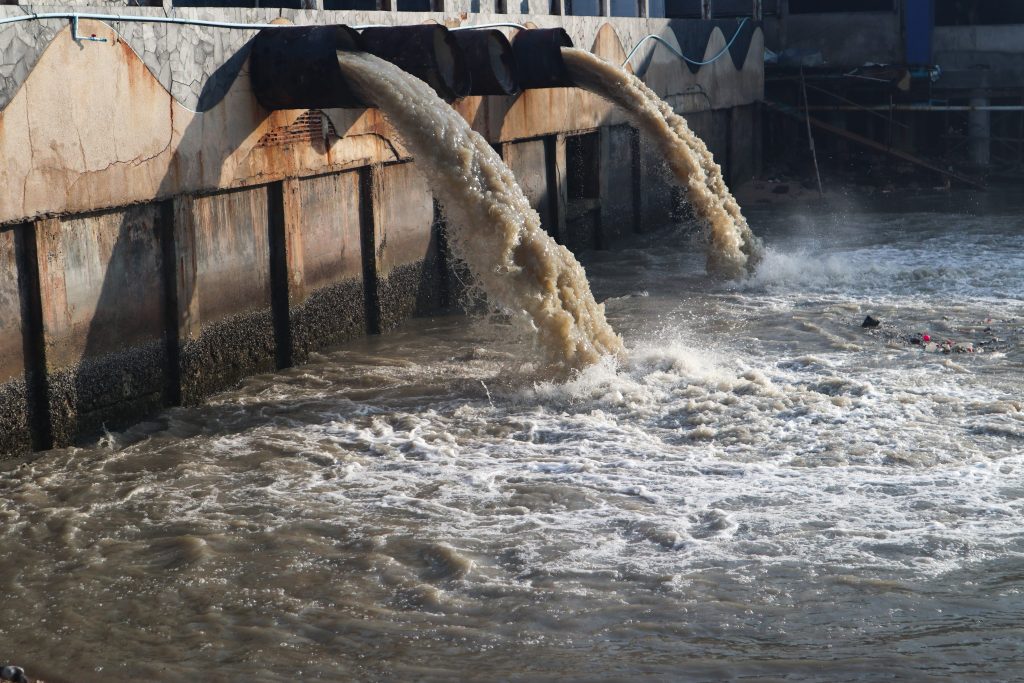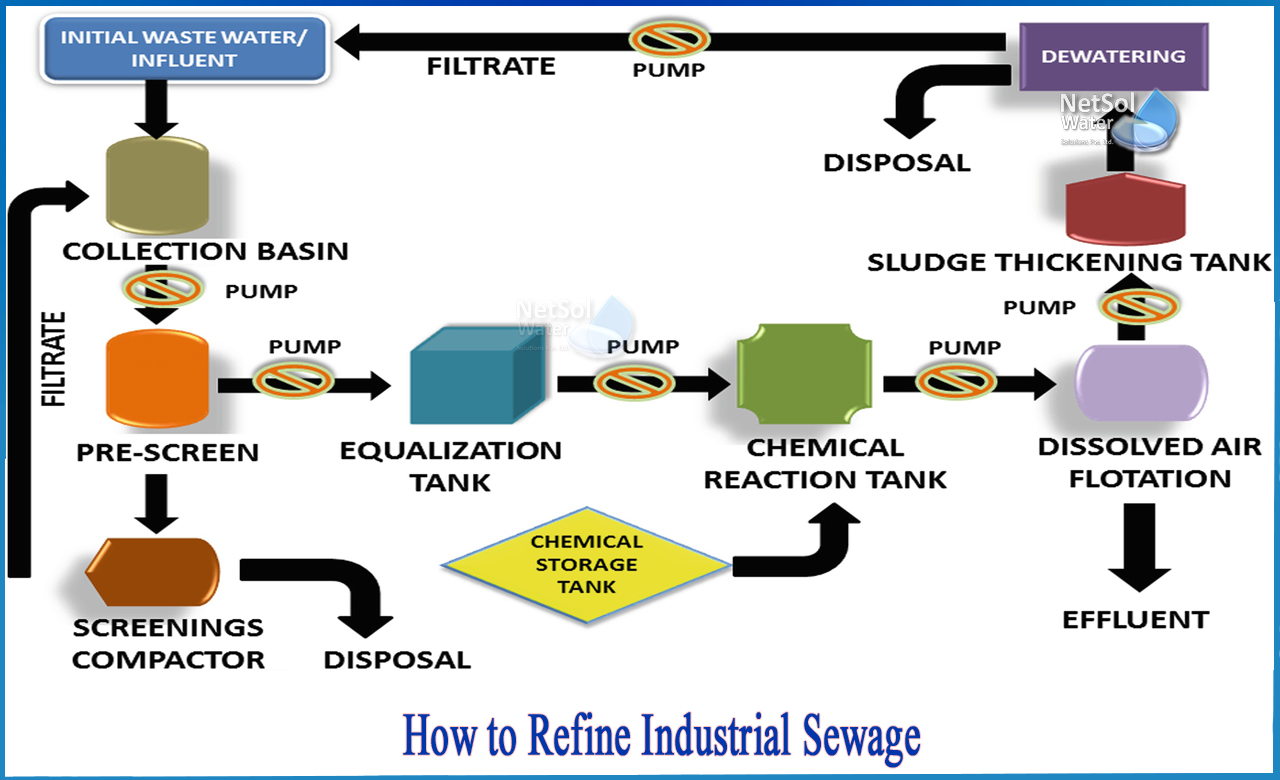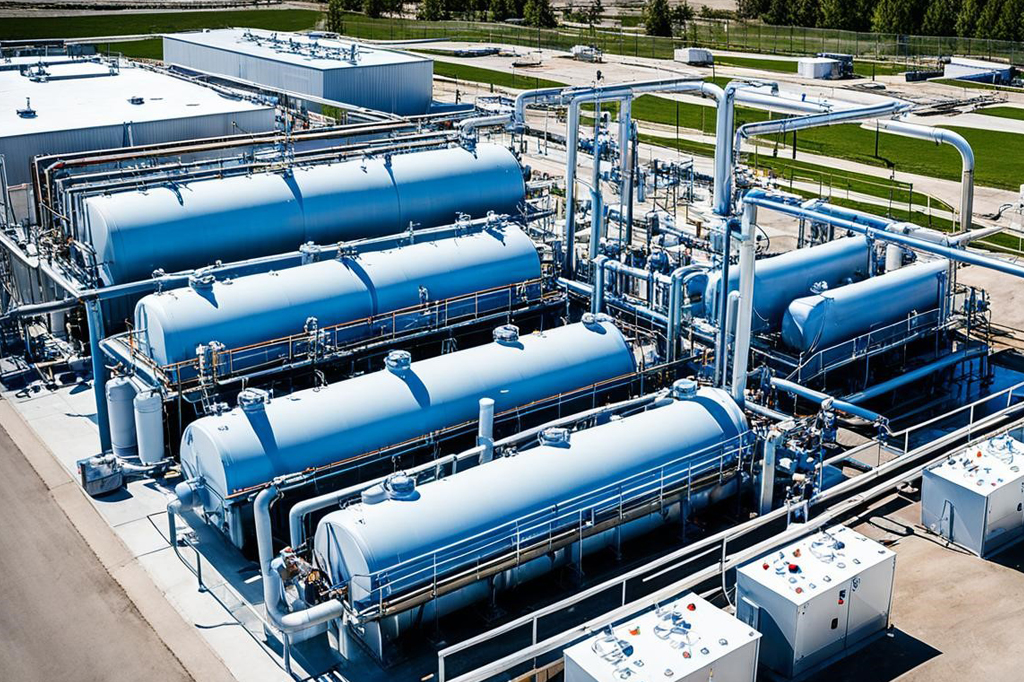Innovations and Breakthroughs in Industrial Waste Water Therapy Technologies
The landscape of industrial wastewater therapy is going through a transformative change, driven by developments that boost both efficiency and sustainability. Arising technologies, such as membrane layer bioreactors and microbial fuel cells, are redefining pollutant elimination processes while contributing to power generation. Additionally, source recovery techniques are obtaining traction, lining up with round economic climate concepts. As governing standards progress, the assimilation of AI and artificial intelligence right into wastewater management systems promises to guarantee and enhance procedures conformity. However, the full ramifications of these improvements elevate crucial concerns regarding their scalability and lasting effect on sector practices.
Introduction of Drainage Treatment Technologies
Wastewater treatment technologies encompass a series of approaches created to eliminate contaminants from commercial effluents prior to their release into the setting. These modern technologies are essential for keeping environmental balance and ensuring conformity with environmental regulations. The key classifications of wastewater treatment consist of physical, chemical, and organic techniques, each serving distinctive functions based on the nature of the impurities present.

Biological treatment techniques utilize microbes to degrade raw material, making them especially reliable for organic-rich effluents. Strategies like turned on sludge and biofilm reactors harness the natural degradation abilities of germs, causing substantial decreases in biochemical oxygen need (FIGURE)
Advanced Purification Strategies
Advanced filtration techniques represent a crucial development in the realm of industrial wastewater treatment, enhancing the efficiency of contaminant removal procedures. Industrial Waste Water Treatment. These approaches incorporate a variety of modern technologies, consisting of microfiltration, ultrafiltration, nanofiltration, and turn around osmosis, which supply consecutive barriers for various particle sizes and chemical frameworks
Microfiltration and ultrafiltration make use of membrane layer systems to eliminate suspended solids, bacteria, and larger natural particles, enhancing the high quality of effluent prior to further therapy. Nanofiltration links the space between ultrafiltration and turn around osmosis, properly getting rid of divalent ions and natural compounds, hence minimizing the tons on downstream processes.
Reverse osmosis supplies the highest possible level of purification by permitting just water and small particles to pass via its semi-permeable membranes, making it perfect for reclaiming high-quality water from commercial effluents. Recent advancements in membrane layer innovation, including the growth of more sturdy and fouling-resistant materials, have actually substantially improved functional efficiency and lowered expenses.
Incorporating these sophisticated filtration strategies not only boosts the overall treatment procedure but additionally contributes to sustainability initiatives by enabling water reuse and source recovery in commercial setups. (Industrial Waste Water Treatment)
Biological Therapy Developments

Moreover, the development of crafted biological systems, such as membrane layer bioreactors (MBRs), integrates biological therapy with sophisticated membrane layer filtering. This integration permits higher effluent top quality and decreased impact, making it appropriate for space-constrained industrial facilities. Innovations in genetically crafted microorganisms have actually additionally emerged, boosting the biodegradation of certain contaminants, such as pharmaceuticals and hefty metals, that are commonly challenging to get rid of.
Additionally, the application of bioaugmentation strategies, where helpful microbes are presented to boost the existing biological therapy procedures, has revealed encouraging cause boosting therapy performance. These advancements jointly represent a pattern in the direction of more efficient and sustainable organic therapy methodologies that can adapt to the progressing intricacies of industrial wastewater streams. As industries continue to focus on ecological conformity, these biological developments will certainly play an essential role in wastewater management.

Resource Recuperation Techniques
In commercial settings, i thought about this the integration of source recovery approaches has come to be progressively essential for improving sustainability and minimizing waste. These techniques focus on drawing out valuable products and energy from wastewater streams, consequently transforming prospective pollutants into multiple-use resources.
One noticeable Look At This method is vitamins and mineral recovery, where nitrogen and phosphorus, usually present over in wastewater, are recorded and exchanged plant foods. This not only minimizes environmental effects yet also supplies a round economy option for farming applications. Additionally, innovations such as anaerobic food digestion enable the conversion of organic waste right into biogas, an eco-friendly energy source that can balance out nonrenewable fuel source use in industrial operations.
In addition, advanced filtration and membrane modern technologies facilitate the recovery of industrial spin-offs such as salts and steels. These recovered materials can be reintegrated into production processes, minimizing the demand for virgin sources.
Future Fads in Drainage Management
As industries increasingly prioritize sustainability, the future of wastewater administration is set to go through considerable makeovers. Technical innovations, such as expert system and machine learning, will enable more efficient monitoring and management of wastewater systems. These technologies can predict upkeep demands, enhance therapy procedures, and boost decision-making, inevitably lowering operational expenses and ecological impact.
Furthermore, the integration of round economic situation principles will certainly play an important function in wastewater administration. Industries are anticipated to move towards systems that not only deal with wastewater however likewise recuperate valuable sources, such as nutrients, water, and energy. This transition will certainly reduce waste and promote the reuse of products, lining up with international sustainability goals.
Arising treatment methods, such as membrane layer bioreactors and advanced oxidation procedures, will additionally enhance the efficiency of wastewater treatment, click this enabling for higher quality effluents appropriate for reuse. Furthermore, governing frameworks are likely to progress, emphasizing more stringent standards for wastewater discharge and motivating markets to embrace cutting-edge therapy options.
Conclusion
In verdict, the development of industrial wastewater therapy innovations shows a substantial shift in the direction of boosted effectiveness and sustainability (Industrial Waste Water Treatment). Innovations in advanced purification techniques, organic therapies, and source recuperation methods highlight the industry's dedication to ecological stewardship.
The landscape of commercial wastewater therapy is going through a transformative shift, driven by innovations that boost both effectiveness and sustainability.Wastewater treatment innovations incorporate a variety of approaches created to get rid of contaminants from commercial effluents prior to their launch into the atmosphere.Using the power of organic processes has actually led to considerable advancements in the treatment of commercial wastewater.Additionally, the execution of bioaugmentation methods, where valuable microbes are presented to enhance the existing biological therapy procedures, has revealed promising results in improving therapy performance. These advancements collectively indicate a fad in the direction of even more sustainable and effective organic treatment methodologies that can adapt to the developing complexities of commercial wastewater streams.